

1987
Damir Lacković, MSc in Geology, museum advisor
17 collections
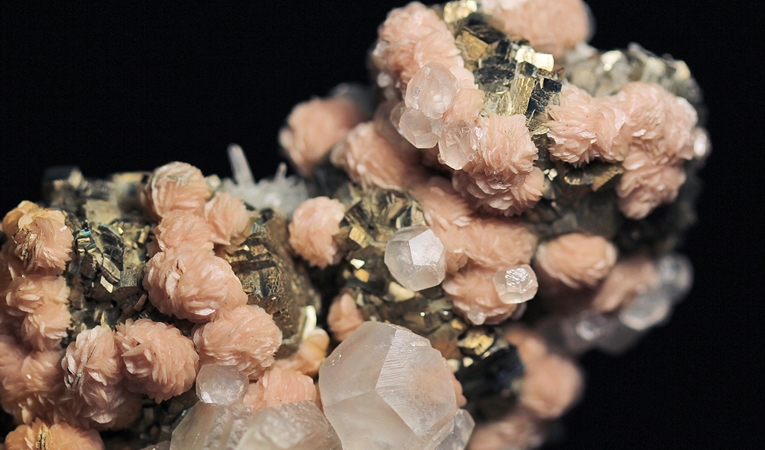
The collection of the mineral paragenesis of the Trepča/Stari Trg mine of the Croatian Natural History Museum consists of mineral samples from one of the most important European lead and zinc mines. It is unique in its specimens of beautiful crystal clusters – druses – not only of ore minerals galena and sphalerite, but also numerous others, in diverse combinations of the rich Trepča paragenesis, which contains more than 80 mineral species. The collection has a special value due to the high level of professional and scientific processing, especially because a large part of Trepča minerals was scientifically and professionally processed right in our institution.
Snježana Mikulčić Pavlaković, MSc, senior curator, is the manager of the collection.
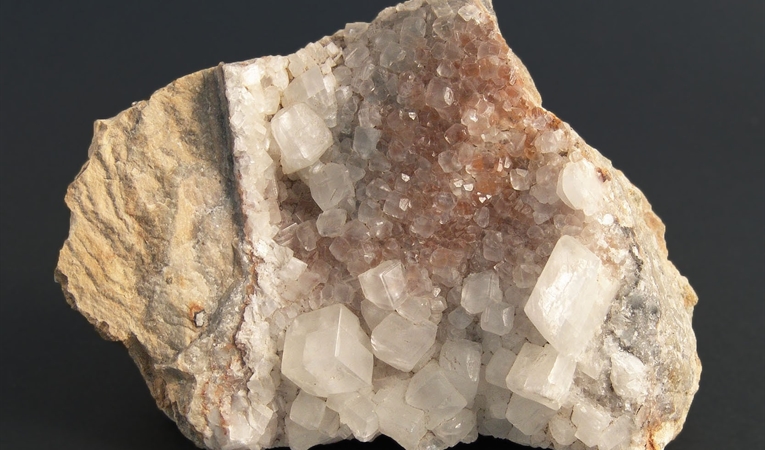
The collection of the mineral paragenesis of Donje Orešje consists of specimens of minerals and rocks that have been systematically collected in the Donje Orešje Quarry in SE Medvednica Mountain since the 1970s. It is an attractive and interesting mineralogical phenomenon rich in different types of crystals, primarily calcite, found in the cracks of mainly Upper Triassic and Upper Cretaceous limestone. Calcite occurs in beautiful, large, and morphologically very diverse single and twinned crystals, which differ not only in shape but also in colour. Sites with so many types of crystals in such a small area are very rare, which makes this collection very valuable.
Today, the former Museum of Mineralogy and Petrography continues its development as a Department within the Croatian Natural History Museum, which was founded on April 1, 1987 by integrating three previously independent museums – the Croatian National Museum of Zoology, the Museum of Geology and Palaeontology, and the Museum of Mineralogy and Petrography.
The Department of Mineralogy and Petrography houses museum materials that are divided into 17 collections. More than 11,000 specimens of minerals and rocks were processed and inventoried. The majority of the collections are still being filled, and the formation of new ones is underway. The new collections, still under their working names, are the “study collection”, the “Medvednica collection”, the “collection of old instruments”, and the “photo library collection”, which will include photo documentation from negatives on glass plates to digital photography.
For the purposes of statistical analysis, the department uses the GMDH company software.
The beginning of the creation of mineral and rock collections in Croatia dates back to the first half of the 19th century, during the Croatian National Revival. Numerous notable figures participated in the collection of museum material, such as the writer Antun Mažuranić, the Archbishop of Zagreb Juraj Haulik, the founder of the Economic Society Pavao Hatz, and the leader of the Illyrian movement Ljudevit Gaj. The collections were shown to the public for the first time at the first Economic Exhibition, held in 1846 in the National Home Palace, in today’s Opatička Street. At that time, the collection of minerals edited by Kajetan Petter, Professor of Physics at the Zagreb Royal Academy, contained about 1,000 samples.
Ljudevit Vukotinović, who devoted himself to the establishment of the National Museum, collected monetary donations and brought objects for the Museum from his travels, also worked on developing the Museum’s collections. Although he was a lawyer by profession, he was actively involved in natural history research. Moreover, he also worked on the creation of Croatian mineralogical and petrographic terminology, which in 1851 resulted in the extensive work titled “Mineralogia i Geognosia” (“Mineralogia et Geognosia”), in which he translated, described, and classified the names of about a hundred mineralogical and about two hundred petrographic terms.
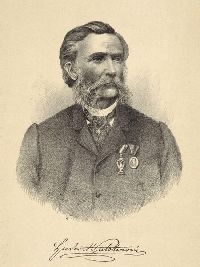
According to the Museum Rules from 1866, the National Museum was divided into two departments, the Department of Natural History and the Department of Archaeology and History. As the collections rapidly grew, due to the overcrowding of the National Home Palace in Opatička Street, the natural history collections were moved in 1869 to the building of the former theater in Demetrova Street. The building was deemed unsuitable even at that time, and it was seen only as a temporary location for the natural history collections.
At that time, Gjuro Pilar, the first Croatian professional geologist, was employed at the Museum. Having created the conditions for professional and scientific work, he became a world-renowned scientist with his dissertation “Les Révolutions de l'Écorce du Globe”, which was published in French in 1869, and in 1877 translated into English and printed by the Smithsonian Institution, Washington D.C. Moreover, he bought the large Lanza collection for the Museum in 1875, from which he singled out the most beautiful specimens as the backbone of the future systematic collection of minerals.
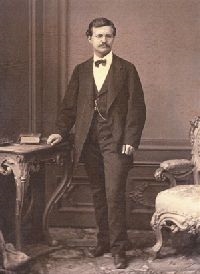
In 1893, after the death of Gjuro Pilar, the Department of Mineralogy and Petrography of the National Museum was divided into the Department of Geology and Palaeontology and the Department of Mineralogy and Petrography, and the scientific and professional work in the field of mineralogy and petrography was continued by Mijo Kišpatić. At that time, museum material was being intensively collected, especially exhibition specimens of minerals and rocks. From 1901 to 1911, Mijo Kišpatić purchased hundreds of extremely beautiful and valuable mineral samples from the world’s most famous sites, among which numerous type localities stand out. In addition to working on museum collections, Kišpatić particularly stood out in the field of petrology, making it as developed as it was in the rest of Europe, or even more. In his dissertation on the formation of the semiopal in the Gleichenberg augite-andesite, he calculated the normative composition of a rock from quantitative chemical analysis, which was the first such attempt in the world. Such classification of rocks was introduced into the global petrographic classification only two decades later.
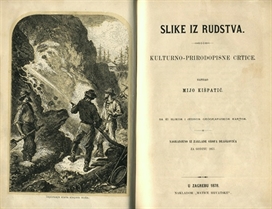
Kišpatić’s longtime associate, Fran Tućan, became the curator of the Museum of Mineralogy and Petrography in 1906, and its director in 1918. In addition to working on museum collections and scientific activities, he also distinguished himself in the field of popularizing science and natural history. His work “Naše kamenje” (“Our Stones”), which represents the first Croatian popular petrographic book, was published in 1907, and in 1919 Matrix Croatica (Matica hrvatska) printed “Naše rudno blago” (“Our Mineral Treasures”), one of Tućan’s most famous popular books. Furthermore, Tućan was a longtime editor of the journal “Priroda” (“Nature”), one of the oldest natural history journals in the world that has been continuously published ever since 1911. It is considered to be one of the oldest journals on environmental awareness in the world.
Tućan’s successor, Ljudevit Barić, began his museum work in 1932. He is remembered as a top expert in crystallography and crystal optics. He scientifically processed a large number of mineral specimens and thus provided the scientific foundations for the Museum’s mineralogical collection. Through his work, Ljudevit Barić gained a great reputation among world-renowned mineralogists, as evidenced by the fact that the famous Croatian mineralogist Branimir D. Sturman named a new type of mineral from the phosphate class, baricite, in his honor.
A number of other employees who stayed at the Museum for a shorter time deserve a whole chapter, but let's mention only three - Bončev, Vankov and Zlatarski. They came from Bulgaria to do their doctoral theses under Pilar's guidance - they finished them with Kišpatić, and how successfully! Zlatarski later wrote the first mineralogy of Bulgaria, and Bonchev is considered the founder of mineralogy in Bulgaria. With them, the famous Zagreb mineralogical school started, which produced a number of very successful mineralogists.
Five curators and two senior museum technicians are employed in today’s Department of Mineralogy and Petrography of the Croatian Natural History Museum:
Damir Lacković, MSc in Geology, museum advisor, Head of the Department of Mineralogy and Petrography. He has been working in the Museum since 1997.
He is the manager of the speleothem collection and Vesuvian lava collection.
Phone: + 385 1 4851700
Snježana Mikulčić Pavlaković, MSc in Geology, senior curator. She has been working in the Museum since 2001.
She is the manager of the collection of microscopic preparations, collection of the mineral paragenesis of Donje Orešje, collection of the mineral paragenesis of the Trepča/Stari Trg mine.
Biserka Radanović-Gužvica, MSc in Geology, museum advisor. She has been working in the Museum since 1987.
She is the manager of the Kišpatić collection, systematic collection of minerals, collection of mineral holotypes and cotypes, meteorite collection.
biserka.guzvica@hpm.hr
Ivan Razum, PhD, MSc in Geology, senior curator. He has been working in the Museum since 2010.
He is the manager of the collection of igneous rocks, collection of metamorphic rocks, and collection of the Faculty of Economics and Business.
Marin Šoufek, MSc in Geology, senior curator. He has been working in the Museum since 1985.
He is the manager of the Lanza collection, Lepoglava agate collection, gemstone collection, precious opal collection, collection of the mineral paragenesis of Busovača.
marin.soufek@hpm.hr
Museum technicians:
Višnja Lisičar, MSc in Geology, senior museum technician. She has been working in the Museum since 1996.
visnja.lisicar@hpm.hr
Silvana Sušić, chemical technician, Senior Museum Technician. She has been working in the Museum since 1992.
silvana.susic@hpm.hr
Ivan Bašić, Museum Technician
ivan.basic@hpm.hr